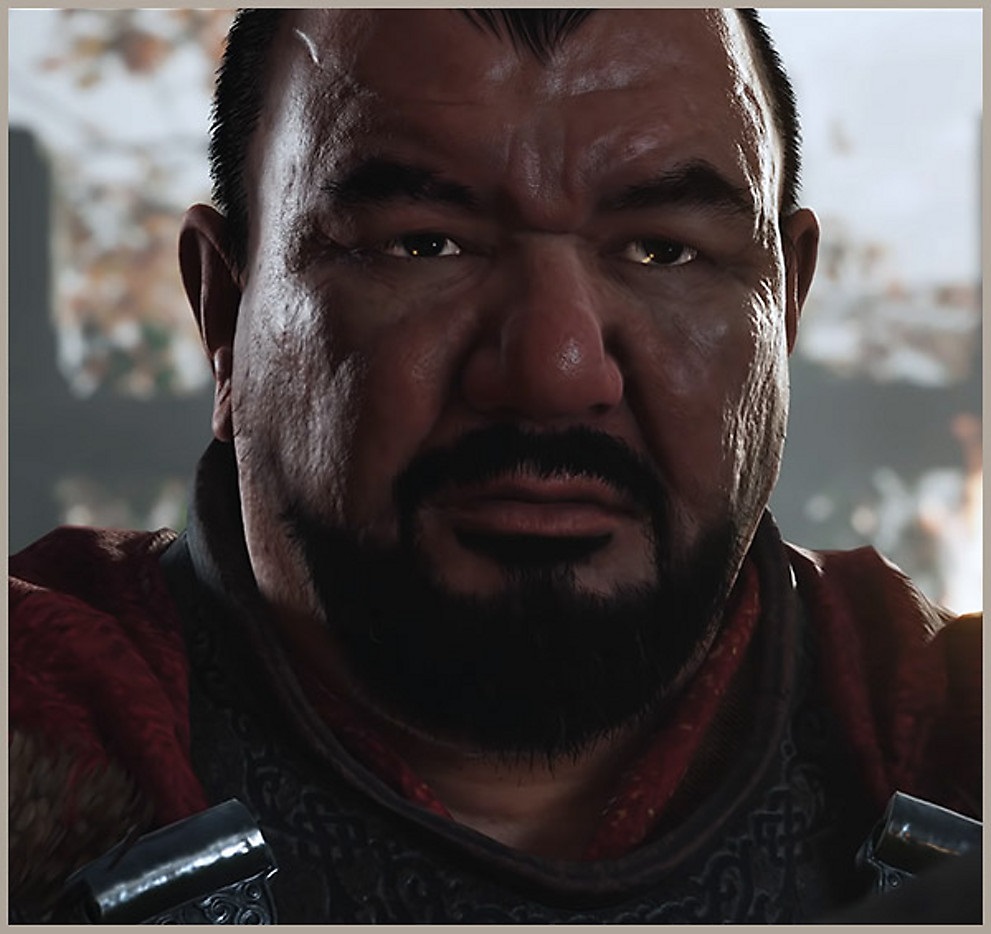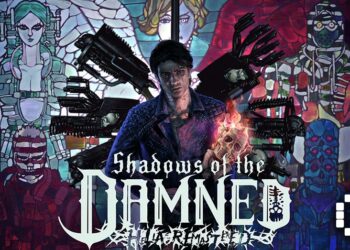From the windy mountains of Tsushima, to the striking black and white of classic samurai film, Ghost of Tsushima has the colour spectrum well represented. On call was Brian Fleming, producer, as well as Chris Zimmerman, in charge of combat. For additional reading, you should also check out our earlier interview with Nate Fox here. Let’s get right into it.


A JOURNEY BEGINS FROM A SINGLE STEP
Be it colour or monochrome, you can’t deny that either palette is quite striking in Ghost of Tsushima. With regards to Jason Connell, who’s creative director, there was much emphasis on the sounds besides the colour, also mentioning how their Japanese partners at Sony were stressing about it. It can be difficult to put into words to describe how the colours needed to be for the game, describing it as: it had to “feel green”, with a “quality of life” attached to it. A lot of this work is attributed to Connell’s leadership of the team, so when you see the beautiful sunrises, the vistas and the colours of fall, as well as the handily colour-coded tribes, you can imagine just how much work has gone into it. Complex is not necessarily better, as the visuals have also been simplified and streamlined to ensure the key elements – the colour and shape – were much clearer.

They’ve gone on-site to get more inspiration about the locations and culture, which applies to the Japanese side, but there are the Mongols too: even if they are our primary antagonists for the game, that doesn’t mean they don’t have a culture of their own. The Mongol Invasions of Japan, 1274 and 1281 is mentioned as their so-called Bible, reading into book’s descriptions of the technology, leadership styles and army organization within.
The Mongolian empire was spectacularly huge by that point, comprising of Asia and Eastern Europe, and learning how the cultures and religions have come together really do make a whole and is the lead up to the whole invasion of Japan. They have likewise seen the scrolls of the time period, preserved accounts of the Mongol invasion of the time and from an American point of view, it felt amazing that give or take 750 years later, these documents are still around for them to see, and can be used as a basis for their game.
Speaking of American points of view, many people are likely not going to be intimately familiar with samurai and the whole Bushido way. While they have made the game because they themselves were fans of samurai, the game was built around the idea of this legendary warrior class, armed with one of the most spectacular weapons ever crafted: the katana. It’s likened to how Red Dead Redemption wouldn’t necessarily have converted players of the game into fans of Westerns: it’s first and foremost a game with a story they’re working to execute to perfection, and have it sell itself to you.

Jin’s story will see him decide if the people around him will mould him, or if he’ll decide that by himself. If you take away the samurai dressing, the story at its core has elements that people can relate to. Even in the modern day, this question of defining who your self is remains, and you can play through Jin’s journey to answer that. Maybe you’ll learn something too.
Story would then mean characters – hello Jin – and the team would have to decide a lot of things: looks, feel, voice, and all that fancy stuff.
In the process, especially for a new IP, it’s a little bit of exploration – you find certain characters in the casting process, and you find a scene.
An example was given in Shimura’s speech, revealed to be one of the first recorded scenes. You get the feeling you want to follow him into battle. They admit there have been challenges, naturally, in finding the right tone while keeping the characters both appealing and grounded without veering into caricature territory. In this case, they’ll be going back and forth about casting, with actors, writers and creative directors working together.

We come to our protagonist: Jin Sakai. As mentioned, the game’s an original IP, so while there’s the historical base, everything else is new: the characters, the world, the style.
We consider ourselves lucky to be in a position where we get to do original properties, and [ I think ] we’ve earned that.
While it is fun to make things from scratch, it’s not easy, to put it lightly, and certainly not something that would be feasible to do “every day” considering the scale of this project. There can be many bad weeks in a row, but you have to keep going on as projects always have ups and downs. As long as there are enough people who have the confidence to work their way through the issues, that you enjoy working with, you’ll be able to make your way through these creative challenges together.
BY THE BLADE
As most of you would know by now, Ghost of Tsushima features weapon stances. There isn’t any “practical” martial arts philosophy in deciding what stance is effective against what, instead having more symbollic meanings. Jin begins with the Stone Stance, the “very samurai, traditional, in control” stance.
As Jin progresses and evolves through the story, the stances are supposed to reflect his emotional journey. He moves away from the rigidity of the Stone Stance as he grows, his movements changing accordingly in where he is in time.

You might say this invokes a certain spirituality but it’s not the biggest part of the main story per se. It’s intended to be an anthology, sure, but they also wanted the main thread to be straightforward enough for you to keep track of as you traipse around Tsushima for the other stories. You could say there’s enough plot points to juggle for the side stories, so a clean cut, overarching main story is enough.
You’ll be able to admire the details of the Jin Sakai’s katana once you have the game. When you think of a katana being an extension of a samurai’s soul, Jin’s is the “storm” of his family; the family iconography – the twin mountains emblem representing the view from his ancestral home – being on the blade, with the sword being the “storm”. The Mongols will have to contend with how this lone samurai is descending upon them with such fury, tasting defeat by his hand.

The Mongols have historically been led by Khubilai Khan, but they have created Khotun Khan in his place. There’s a pretty simple reason: Khubilai was not the one who led the invasion itself and was not on Tsushima. Besides, they want to tell an original work of fiction. Yes, there is historical basis, but that’s the foundation: they also want to tell an entertaining story.
We’re not trying to make a documentary … not a retelling of the invasion.
The whole “honorable” samurai way and “dishonorable” ghost isn’t meant to be so strictly distinct: you are meant to be in Jin’s shoes struggling to decide between his choices, with the gameplay styles being the player choice rather than a scale of “good” and “evil”.
For better or worse, if people choose good as their first choice, they would choose that almost exclusively throughout the rest of the game: there was never a choice.
There is no point where Jin might simply “give up” being a samurai, but you do what you have to do and decide the best method to deal with a situation. Jin himself may want to fight the “honourable” way, but if it is better for him to strike from the shadows, then it will be done. He will always be a samurai, but the definition that he was taught, with his behaviour, will change.
ONE MORE THING
The interact button in the game is R2 instead of other buttons you might be used to. It’s revealed that in play testing, R2 was the most commonly used button to, well, interact, when they went through the data they got. It’s not “traditional”, but it’s what’s worked best, so that’s how it is.
Ghost of Tsushima will be launching in just a few short days for the rest of the world. One thing’s for sure: this game will be Jin’s story, and how he interacts with the world. With much to interact with throughout the game, from the NPCs to the animals, will he – and in turn, you – find the answers you seek? Whether or not you’re a fan of samurai, the journey is not exclusive to them. You could say this is a “human” story in a way.
Nonetheless, there are some things you could say can only be told through a samurai’s lens, or at least, one who’s wrangling with his identity. Step into Jin’s shoes, and see where the wind takes you.
















![[gamescom asia 2024] EXCLUSIVE: Oil King’s Rise from EVO Champion to a Fighting Game Icon!](https://cdn.gamerbraves.com/2024/11/Oil-King-Interview-SF6_FI-360x180.jpg)
![[gamescom asia 2024] EXCLUSIVE: GamerBee Shares His Professional Journey – Over 10 Years in Street Fighter](https://cdn.gamerbraves.com/2024/11/GamerBee-Interview-SF6_FI-360x180.jpg)








